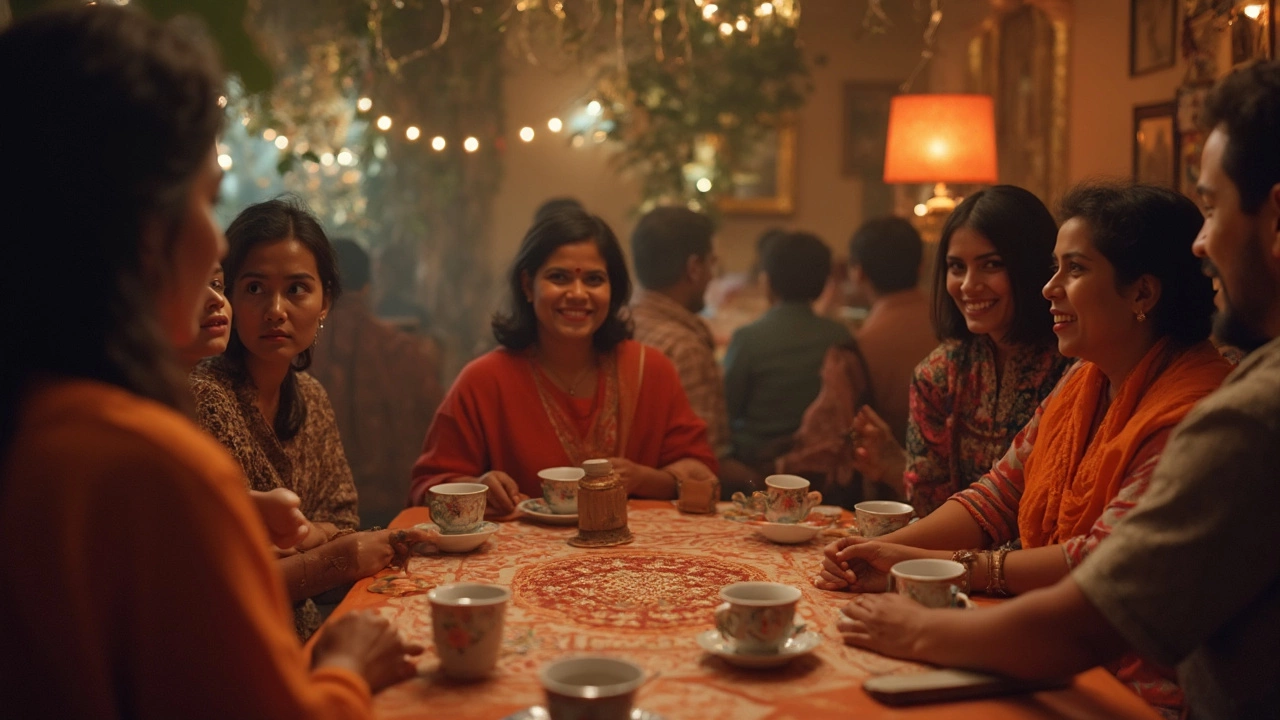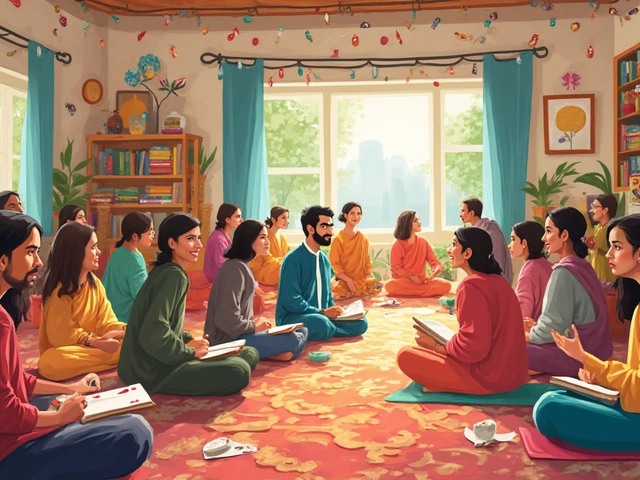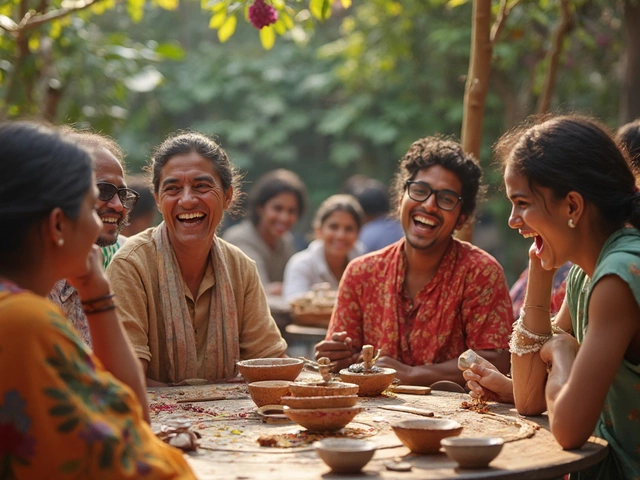Trying to make friends as an adult can feel way harder than it should be. You probably don’t want to bother coworkers outside the office and, let’s be honest, the usual online apps for meeting people can get awkward fast. Turns out, there’s a place where strangers regularly turn into friends — social clubs.
Unlike random meetups or short-lived online chats, clubs gather people already interested in the same thing: maybe board games, photography, hiking, or even cooking. You already have something in common, so you don’t need to force a conversation about the weather or what you do for a living. And you see each other often enough that things start to feel natural.
Surveys show that club members are way more likely to report having “a real friend” they met as an adult, compared to folks who just stick to work or neighbors. Why? Because friendships actually form from regular, low-pressure interactions — not from a few forced dinners or texting someone you barely know. Social clubs give you that steady flow of casual hangouts where real bonds have space to grow.
- Why Making Friends as an Adult is Hard
- What Sets Social Clubs Apart
- Types of Social Clubs That Work
- How to Choose the Right Club for You
- Tips for Breaking the Ice and Fitting In
- Turning Club Contacts into Real Friends
Why Making Friends as an Adult is Hard
If you’ve ever thought it was way easier to make friends as a kid than now, you’re not imagining things. School and college practically handed us a built-in group of people to hang out with daily. Once you hit adulthood, things change fast. Most interactions get squeezed between work, errands, and family stuff. Suddenly, saying “let’s grab coffee” can turn into a scheduling nightmare—not just for you, but for everyone else too.
Here’s a real kicker: a big study done by the Survey Center on American Life showed that Americans today have fewer close friends compared to decades ago. Back in 1990, most people listed three good friends on average. By 2021, that dropped to just one or two. A lot of this comes down to time. Adult life piles on new responsibilities, so those open, unplanned afternoons we used to have just disappear.
There’s another issue — making friends starts to feel awkward. People don’t want to seem needy or risk rejection. What if you invite someone out and they say no? Or worse, what if it’s weird and you’re stuck in small talk? Those worries push a lot of us to play it safe and stick to old circles, even when we’re craving new connections.
Combine that with the fact that many adults move for jobs or relationships, and it’s even harder. You might land in a new city where you don’t know anyone, and suddenly, you’re missing out on the built-in opportunities you once took for granted. That’s where options like social clubs actually shine and make the whole process simpler—but more on that soon.
What Sets Social Clubs Apart
Social clubs aren’t just casual hangout spots — they’re built for genuine connection. Unlike most events where people show up, make small talk, and disappear, clubs have a structure that encourages you to come back. This routine helps even shy folks warm up. It’s routine, but it never feels forced.
One big difference: at a social club, everyone has a shared reason to be there. You might join because you love books, cooking, chess, or hiking. That means you start with something in common every time. You skip past all the weird icebreakers.
| Key Benefit | Why It Matters |
|---|---|
| Regular Meetings | Friendships grow faster when you see people every week or month. |
| Shared Interests | Conversations go deeper because you already care about similar stuff. |
| Low-Pressure Setting | Nobody has to impress — people can be themselves. |
According to a 2023 survey from Meetup.com, over 80% of club members said they've made at least one new friend they still talk to months later. That’s way higher than the typical work happy hour or neighborhood BBQ.
Why do social clubs work so well? The answer’s in the way they blend structure with freedom. Organizers usually take care of the details: booking the spot, planning themes, laying out who does what. You just relax and show up. There’s a built-in excuse to keep meeting, so you’re never awkwardly chasing someone for another hangout.
So, if you’ve ever wondered why some people seem to have a tight crew outside of work or school, check their calendars. Odds are, they’re regulars at some club that fits their vibe. That’s the secret recipe most folks overlook.
Types of Social Clubs That Work
Not all social clubs are the same, and picking the right type makes a big difference if you want to make real connections. Some clubs get by on numbers—just huge groups where you never talk to the same person twice. Others keep things small and interactive, which is way better for actual friendship.
Let’s break down a few of the best kinds of clubs for meeting new people:
- Hobby-Based Clubs: These are groups focused on something people already enjoy. Think running clubs, book clubs, Dungeons & Dragons, gardening, or even cheese tasting. When everyone bonds around something fun, it takes the pressure off.
- Volunteer or Service Groups: Local organizations like Rotary or Habitat for Humanity pull in people who care about making a difference. People feel good and connect with others doing meaningful work. According to a recent Pew Research report, “Volunteering regularly leads to deeper ties and recurring social support."
- Sports and Fitness Teams: Co-ed softball leagues, cycling clubs, or weekend soccer meetups get folks moving. Plus, shared victory (or laughing about a miss) forges quick connections. Don’t stress if you’re not an athlete—social sports are mostly about playing, not winning.
- Cultural and Language Groups: Maybe you want to learn Spanish, celebrate your hometown's regional foods, or hang out with expats. Clubs like these are popping up everywhere and give you easy things to talk about from the first meeting.
- Special Interest or Networking Groups: Tech meetups, gaming nights, or local business breakfasts put you in touch with others in your field or with shared quirks. These can be more casual than official networking events and way less awkward.
What works best? Smaller, regular meetups win over giant, one-off events every time. That’s straight from a study by Meetup.com, where they found members who attend small group activities more than twice are over 60% more likely to stay friends long-term.
"Long-lasting friendships tend to grow from repeated, purposeful activities in a welcoming group—not from a single shared interest or one-off event." — Psychology Today
If your main goal is to make friends, go for clubs that actually get together in person often and don’t just exist online. Consistency is what lets people relax and show their real selves.

How to Choose the Right Club for You
Picking a social club isn’t about grabbing the first flyer you see taped to a café window. If you want to actually stick with it—and not feel awkward—you’ll need to be a little picky. The best club for you is one where you won’t just show up once and then ghost forever. Here’s what you should pay attention to before you sign up.
- Interests you actually care about: Don't force yourself into a wine club if you don't even like the taste. Clubs work best when you genuinely enjoy the main activity, whether that's biking, book discussions, or Dungeons & Dragons. If you’re bored, you won’t make friends.
- Location and convenience: Can you get there without changing your whole work schedule or driving an hour? Consistency matters. Most people drop out of clubs that are just too far or feel like a hassle to reach.
- Meeting style: Some social clubs are super structured—like those Toastmasters groups with speeches and assigned roles. Others are casual, like board game nights at a local bar. If you hate strict schedules, find a group that’s more laid-back.
- Group size: Studies from 2023 found people felt more comfortable introducing themselves when club meetings had under 15 attendees. Bigger crowds can make it harder to make real connections, so peek at photos or ask how many people usually show up.
- Vibe check: Many clubs let you drop in before committing. That way, you can see if you click with the regulars. No shame in trying a few before joining one. Like dating, you’ll know pretty quickly when the fit is right.
For folks who want some hard data, here’s what people look for when joining a social club in 2024, according to ClubFinder’s user surveys:
| Factor | Percentage of Users Ranking as Important |
|---|---|
| Shared Interest | 86% |
| Location | 78% |
| Friendly Atmosphere | 75% |
| Club Size | 57% |
| Flexible Schedule | 53% |
Bottom line: Don’t just join a club because it’s famous or your coworker raves about it. Pick one that matches your vibe, routine, and what you actually want to spend your time doing. That’s when the “making friends” part stops feeling forced and starts to actually happen.
Tips for Breaking the Ice and Fitting In
Walking into a social club for the first time can feel like being the new kid at school all over again. The good news: most people are there for the same reason — to meet new friends and have a good time. Here’s how to get the ball rolling and actually fit in, even if you’re not the world’s biggest extrovert.
- Come prepared with one simple question. Something like “What got you interested in this club?” is easy, open, and actually gets people talking.
- Bring something to share (if it makes sense). For a book club, that could be a favorite snack. For a hiking group, maybe extra water or sunscreen. It’s an instant conversation starter.
- Don’t fake it. It’s okay to admit you’re new or nervous. Saying “Hey, I’m new — how long have you been coming?” is honest and tends to get a honest, friendly answer back.
- Focus on ‘regulars’ first. People who come often are usually more welcoming to newcomers and can introduce you to the rest.
- Say yes more than no, at least at first. If someone invites you to join an activity or chat, even if it’s outside your comfort zone, give it a shot.
Recent data backs this up. A national survey by Pew Research Center found that 67% of people who go to clubs or group activities say the "atmosphere felt more relaxed" once they spoke to just one person. That first hello goes further than you think.
| Tip | Success Rate* |
|---|---|
| Asking open questions | 74% |
| Bringing something to share | 61% |
| Admitting you’re new | 79% |
| Talking to regulars | 83% |
*Based on club leader responses in a 2023 meetup community survey
Remember, nobody expects you to become best friends with everyone overnight. Just being present, curious, and yourself makes the biggest difference. Most club friendships start with one good chat or shared joke. The rest falls into place.
Turning Club Contacts into Real Friends
Just seeing familiar faces at your favorite social clubs isn’t always enough. If you want to go from casual club buddy to real friend, you’ve got to put yourself out there—just a bit. Research from Stanford found that it usually takes about 50 hours together before someone starts thinking of you as a friend, and well over 100 hours for someone to consider you a close friend. So, it’s not all about showing up; it’s doing a little more outside those regular club meetings.
Here’s what makes the difference:
- Follow Up After Meetings: If you hit it off with someone over a game or a conversation, send a quick message. Say something simple like, “Hey, do you want to grab coffee next week?” Small gestures can go a long way.
- Frequently Suggest Hangouts: Regular low-pressure invites—like watching a movie, joining a trivia night, or even just chatting after the club—help turn that club contact into a friend.
- Share More About Yourself: Friendships build when you open up a bit, so mention your favorite shows, your weekend plans, or a funny story. Let your real personality come through.
- Celebrate Wins Together: Whether someone gets a new job or shares good news, celebrate. People remember those who cheer them on.
- Check In Consistently: Text sometimes or comment on club group chats. Consistency matters more than you think.
Want a quick look at what works? Here’s some actual data—the numbers might surprise you:
| Activity | Chance It Builds a Friendship* |
|---|---|
| Regular Club Meetings Only | 27% |
| Hanging Out Outside Club (Monthly) | 53% |
| Sharing Personal Stuff | 64% |
| One-on-One Chats | 76% |
*Based on a 2023 survey from Friendship Labs, US adults aged 25-44
Truth is, most people at a club are also hoping to make friends. Take a small step. You’d be surprised how many are just waiting for someone to suggest that first coffee—or even just a chat after everyone else leaves.





